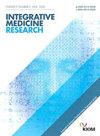对于非特异性慢性腰痛,埋线和耳针是否应该联合使用,而不是单独使用?一项双盲、随机、假对照试验
IF 3
4区 医学
Q2 INTEGRATIVE & COMPLEMENTARY MEDICINE
引用次数: 0
摘要
非特异性慢性腰痛(NCLBP)是最常见的类型,是全球致残的主要原因。埋线针与耳针的联合作用尚不清楚。本研究评估与单独使用相比,TEA和AA联合使用是否能改善NCLBP的管理。方法在常规治疗的基础上,将168例NCLBP患者随机分为4组(n = 42): TEA+AA组、TEA+假性AA组、AA+假性TEA组或两者均为假性TEA组。干预持续4周,随访4周。主要观察指标为Oswestry残疾指数(ODI);次要结局包括疼痛评分、扑热息痛使用、生活质量、总体改善和不良事件(ae)。结果在意向治疗分析中,针刺组ODI百分比得分明显低于假手术组(p <;0.0001)。TEA+AA组和TEA+假性AA组均优于AA+假性TEA组(平均差异[MD]分别为9.1和-7.5;p & lt;0.0001),并在随访期间达到最小临床重要差异(MCID)。在第2周和第6周,TEA+AA组比TEA+sham AA组有更大的改善;然而,这些差异没有达到MCID。次要有效性结果也遵循类似的趋势。结果与协议分析一致。ae是温和的和自我限制的。结论TEA和AA是治疗NCLBP安全有效的辅助手段,TEA疗效更持久。在TEA中加入AA可能会加速反应,但临床相关性仍不确定。进一步的多中心研究需要更长时间的随访和基于综合征的方法。试验注册:clinicaltrials .gov (NCT06682273)。本文章由计算机程序翻译,如有差异,请以英文原文为准。
Should thread-embedding and auricular acupuncture be combined rather than used individually for non-specific chronic low back pain?: A double-blinded, randomized, sham-controlled trial
Background
Non-specific chronic low back pain (NCLBP), the most common type, is a leading cause of global disability. The combined effect of thread-embedding acupuncture (TEA) and auricular acupuncture (AA) remains unclear. This study evaluates whether combining TEA and AA improves NCLBP management compared to either alone.
Methods
In this double-blind randomized controlled trial, 168 NCLBP patients were randomized into four groups (n = 42): TEA+AA, TEA+sham AA, AA+sham TEA, or sham both, alongside conventional treatment. The intervention lasted 4 weeks with a 4-week follow-up. The primary outcome was the Oswestry Disability Index (ODI); secondary outcomes included pain score, paracetamol use, quality of life, global improvement, and adverse events (AEs).
Results
In the intention-to-treat analysis, the acupuncture groups showed significantly lower ODI percentage scores compared to the sham group (p < 0.0001). Both the TEA+AA and TEA+sham AA groups outperformed the AA+sham TEA group (mean differences [MD]:9.1 and -7.5, respectively; p < 0.0001) at week 4 and achieved the minimal clinically important difference (MCID) during follow-up. The TEA+AA group showed greater improvement than the TEA+sham AA group at weeks 2 and 6; however, these differences did not reach the MCID. Secondary effectiveness outcomes followed a similar trend. The results were consistent with the per-protocol analysis. AEs were mild and self-limiting.
Conclusion
TEA and AA are safe and effective adjuncts for managing NCLBP, with TEA showing more sustained benefits. Adding AA into TEA may accelerate response, though clinical relevance remains uncertain. Further multicenter studies with longer follow-up and syndrome-based approaches are warranted.
Trial registration
ClinicalTrials.gov (NCT06682273).
求助全文
通过发布文献求助,成功后即可免费获取论文全文。
去求助
来源期刊

Integrative Medicine Research
Medicine-Complementary and Alternative Medicine
CiteScore
6.50
自引率
2.90%
发文量
65
审稿时长
12 weeks
期刊介绍:
Integrative Medicine Research (IMR) is a quarterly, peer-reviewed journal focused on scientific research for integrative medicine including traditional medicine (emphasis on acupuncture and herbal medicine), complementary and alternative medicine, and systems medicine. The journal includes papers on basic research, clinical research, methodology, theory, computational analysis and modelling, topical reviews, medical history, education and policy based on physiology, pathology, diagnosis and the systems approach in the field of integrative medicine.
 求助内容:
求助内容: 应助结果提醒方式:
应助结果提醒方式:


